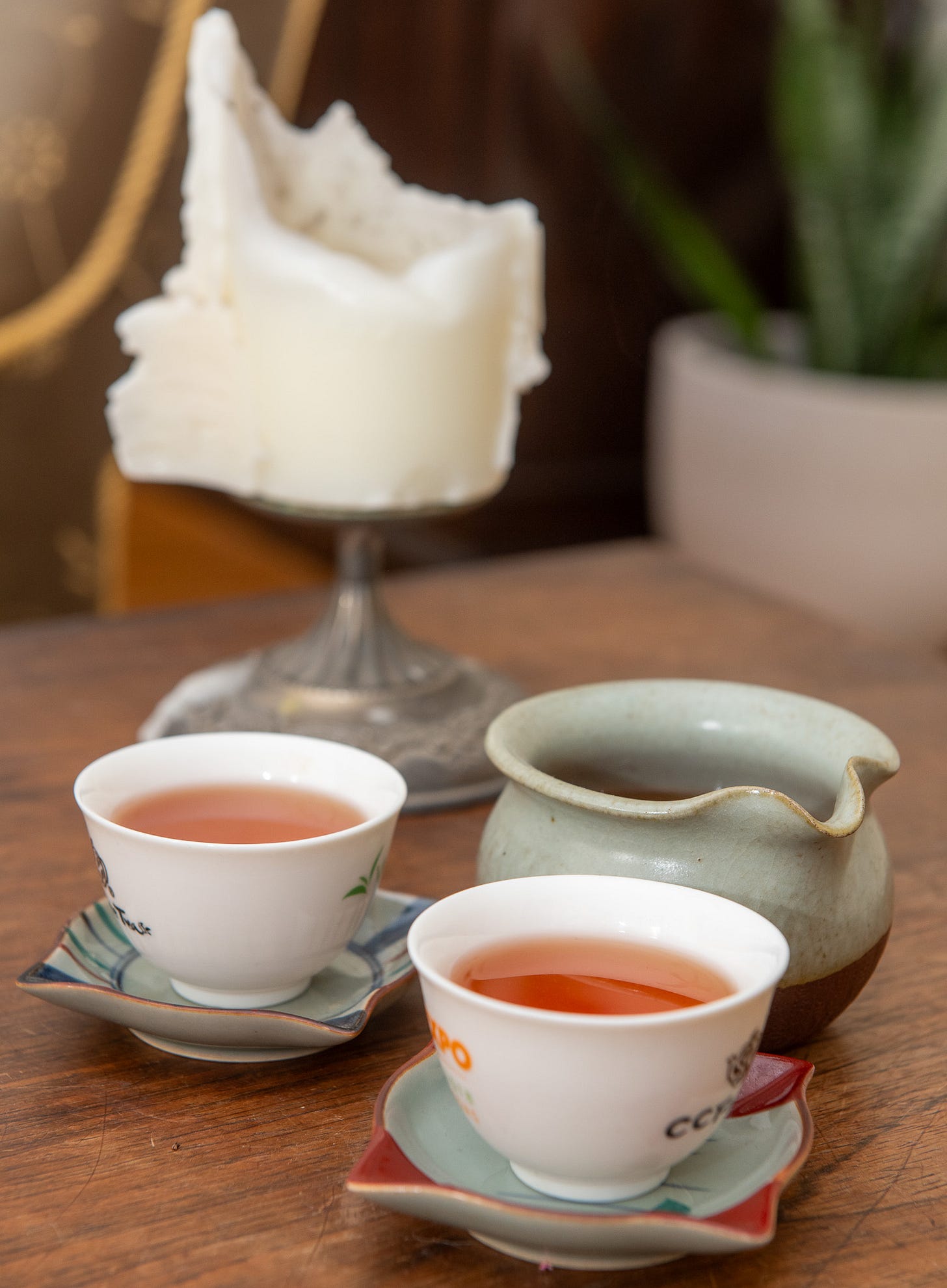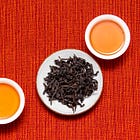Something unusual, yet familiar
The tea: Doke Estate Rolling Thunder oolong, sold by Alaya Tea. $24 for 100g.
Oolong teas are the specialty of China and Taiwan. That’s where the tradition is strongest and where local expertise and machinery is most endowed. But tea makers everywhere like to try new things, and for the producers at the Doke Estate, a complex and aromatic oolong is an interesting departure from the more conventional black and green styles they make for the export market. This tea is a nice representation of a growing category of oolongs from the Indian subcontinent.
It’s made from the large-leaf Assamica variety of the tea plant, but processed with the lighter hand of a Darjeeling. The result tastes somewhere in between: there’s a mouthwatering briskness from the Assam and a nutty, wintergreen element I’ve only tasted in some second flush Darjeeling teas. Oolong teas undergo a long, involved withering process where they develop their aromatics that define the style. You can taste that slow oxidation in the hints of butter and caramel.
The source: Alaya Tea, as in Himalaya, is the project of Esha Chhabra and Smita Satiani, who launched the company in 2019 to spotlight small batch Indian teas and herbal brews from growers that prioritize ecological practices. That includes the organic Doke Estate, a family-owned garden in the state of Bihar that’s less than 150 miles from the Darjeeling hills. Doke was founded in 1998 and specializes in teas with large, carefully rolled leaves. You can find more of their teas, like the Black Fusion black tea, online elsewhere.
To brew: I dose an oolong like this heavier than I would a typical Indian black tea, around 5 grams for a 150 milliliter teapot (1g/30ml). Steep with water juuuuuust off the boil for 70 to 80 seconds to capture the tea’s weighty depth. I get three or four good steepings out of it—less than many East Asian oolongs, though more than a typical black tea. In the cup, it tastes like caramel sauce without the sweetness; the sweet sensations instead come from an understated walnut and pecan warmth. That, plus faint herbal and buttery qualities, make for a brew that has me reaching for another sip without realizing I’m doing so. I think this is what English people describe as “moreish.” I call it salted pretzels at the bar.
Through the end of the year, any new paid subscription to Leafhopper will grant you a free subscription you can give to someone else. Sign up for a monthly plan and you’ll get a free 1-month subscription. Sign up for an annual plan and you’ll get a free 1-year subscription. Simply email me at max.falkowitz@gmail.com when you subscribe to tell me who should receive your gift.
Leafhopper is taking a break next week for the holidays. See you on December 31st!
Flight of the black dragon
The name oolong, or wulong if you want to get closer to the Mandarin, translates to “black dragon.” Inspect the twisted leaves of a traditional Wuyi oolong tea and you’ll see why: their serpentine curves mimic an Asian dragon flying through the air. The nomenclature has stuck even for teas that don’t look like dragons at all. Tightly rolled oolongs from Taiwan more closely resemble golems crouched in repose. And the oolongs that have emerged from other regions take on all kinds of appearances, tastes, and aromas.
Describing oolong teas to newcomers is tricky. They exhibit a wide range of flavors, from jasmine to smoked hickory, and are made in all kinds of ways. So educators usually rely on a spectrum of oxidation as teaching guide. Green teas are barely oxidized, black teas are almost fully oxidized, and oolong teas lie somewhere in the middle. The noble goal of this heuristic is to show that the world’s many teas all come the same Camellia sinensis plant. But it also suggests that the categorical difference between types of tea is the level of oxidation in the leaves. This is true in a sense, though backwards. These teas aren’t different styles because of their levels of oxidation. They have different levels of oxidation because of the different ways they’re made.
It’s important to understand this distinction when talking about Indian oolongs, which are like Chinese and Taiwanese oolongs, but also not, to the point where if you didn’t know, you probably wouldn’t guess some were oolongs at all. South Asian producers have been experimenting with oolong styles for a few decades now, with mixed results. Recently I’ve been tasting through a number that have grown beyond “interesting” to “wow, I really like drinking this,” so I want to talk about them with you.
Keep reading with a 7-day free trial
Subscribe to Leafhopper to keep reading this post and get 7 days of free access to the full post archives.








